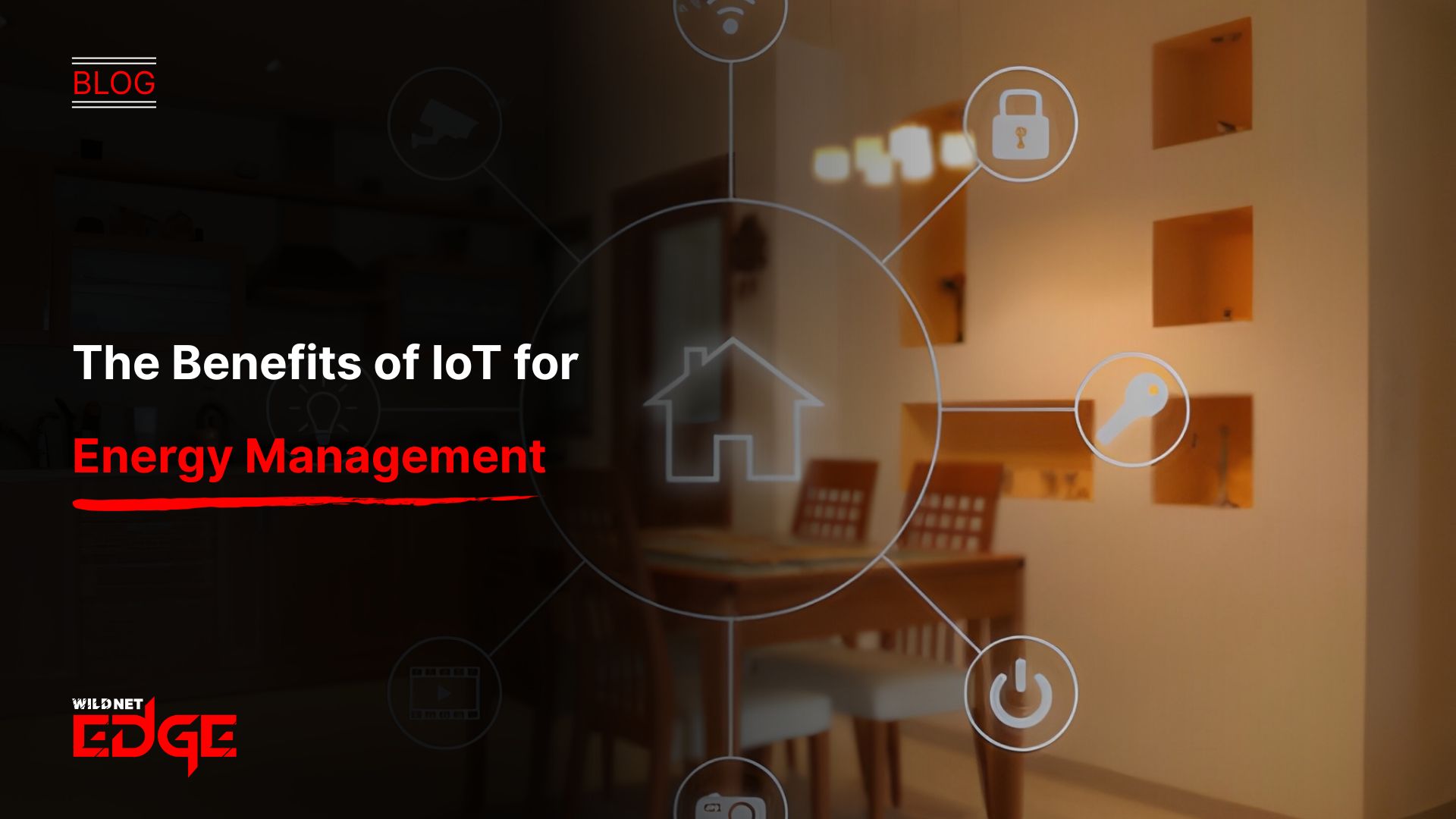TL;DR
This article details the significant advantages of leveraging the Internet of Things (IoT) for energy management across various sectors. It explains how IoT in energy management utilizes connected sensors and devices to provide real-time visibility into energy consumption patterns. Key benefits highlighted include substantial cost reductions through optimized usage and automated adjustments, enhanced grid stability via smart grid technologies, and improved sustainability efforts. The guide explores specific applications like smart building automation and industrial process optimization, showcasing how smart energy solutions drive IoT energy efficiency.
Energy is one of the most significant operational expenses for nearly every business, from manufacturing plants and commercial buildings to data centers and retail stores. Traditional energy management relies on manual readings and reactive adjustments, leading to significant waste and inflated costs. In 2025, the Internet of Things offers a robust, data-driven solution. Implementing IoT in energy management provides the real-time visibility and automated control needed to reduce consumption dramatically, cut costs, and build a more sustainable operation.
What is IoT in Energy Management?
IoT in energy management involves deploying a network of connected sensors, smart meters, actuators, and software platforms to monitor, analyse, and control energy usage in real-time. These devices collect granular data on electricity, gas, and water consumption from various points within a facility or across a distributed infrastructure.
This data is then transmitted to a central cloud platform where it can be visualized and analyzed. Based on this analysis, automated actions can be triggered—like adjusting HVAC settings, dimming lights in unoccupied areas, or optimizing machinery run times—to minimize waste. These integrated systems form the basis of modern smart energy solutions. Building these sophisticated monitoring dashboards often requires expertise from an IoT Development Company.
Why IoT is Transforming Energy Efficiency
Integrating IoT moves energy management from guesswork to precision, delivering substantial benefits.
Significant Cost Reductions
This is the most direct benefit. By providing granular, real-time visibility into where and when energy is being consumed, IoT allows businesses to identify major sources of waste. Smart controls can then automatically optimize usage. Studies indicate that commercial buildings implementing smart energy management systems can achieve significant savings, sometimes upwards of 15-20% on their energy bills, showcasing strong IoT energy efficiency.
Enhanced Operational Visibility and Control
Traditional utility bills only provide a high-level view of monthly consumption. IoT systems offer minute-by-minute data from individual circuits, machines, or zones. This deep visibility allows facility managers to pinpoint inefficient equipment, detect anomalies (like sudden energy spikes indicating a malfunction), and make data-driven decisions about operational adjustments. Developing the interfaces for this often involves a Custom App Development Company.
Predictive Maintenance for Energy Systems
IoT sensors can monitor the health of critical energy infrastructure like HVAC systems, transformers, or industrial motors. By analyzing vibration, temperature, and energy consumption patterns, AI algorithms can predict potential failures before they occur. This proactive maintenance prevents costly emergency repairs and ensures optimal equipment efficiency.
Improved Sustainability and ESG Reporting
Reducing energy consumption is a core component of any corporate sustainability initiative. IoT in energy management provides the verifiable data needed to track progress towards energy reduction goals and accurately report on Environmental, Social, and Governance (ESG) metrics, which is increasingly important for investors and customers.
Key Applications of Smart Energy Solutions
The Internet of Things (IoT) technology utilizes its power for various applications in different sectors.
- Smart Buildings: Real-time occupancy, weather forecasts, and utility pricing signals determine the automatic control of lighting, heating, and ventilation and air conditioning (HVAC) based on it.
- Industrial Energy Management: It is possible to monitor energy consumption at the machine level in a factory, which helps to plan better production schedules and spot the least efficient equipment.
- Smart Grids: By allowing utility companies to match energy supply to demand more accurately, use renewable sources and locate outages quickly, and power companies can take these steps.
- Data Center Optimization: The energy drawn by cooling systems is controlled very finely depending on real-time server loads, which leads to significant savings in power-hungry data centers.
These smart energy solutions often require sophisticated software backends. Building these complex systems requires robust Software Development Solutions.
Case Studies
Case Study 1: A Commercial Office Building’s HVAC Optimization
- The Challenge: A large office building owner was facing high HVAC energy costs. Their existing system ran on fixed schedules, regardless of actual occupancy levels, which varied significantly throughout the day and week.
- Our Solution: We deployed a network of IoT occupancy sensors and integrated them with their Building Management System (BMS). We developed control logic that automatically adjusted heating and cooling setpoints in different zones based on real-time occupancy data.
- The Result: The building achieved a 25% reduction in HVAC energy consumption within the first year, translating to hundreds of thousands of dollars in savings. Tenant comfort also improved due to more responsive climate control.
Case Study 2: A Manufacturing Plant’s Machine Monitoring
- The Challenge: A manufacturing plant suspected some of its older machinery was consuming excessive energy but lacked granular data to pinpoint the culprits or justify replacement costs.
- Our Solution: We installed smart energy meters on their key production lines and individual large machines. The real-time data was fed into a cloud platform with custom dashboards visualizing consumption patterns for each asset. A skilled Product Development Company can assist in designing both the hardware sensors and the integrated software alerts for such systems.
- The Result: The plant identified three specific machines responsible for over 40% of their peak energy demand. Replacing these machines with more efficient models resulted in a payback period of less than 18 months and significantly improved overall IoT energy efficiency.
Our Technology Stack for IoT Energy
We use reliable, scalable, and secure technologies.
- IoT Platforms: AWS IoT Core, Microsoft Azure IoT Hub, Google Cloud IoT
- Connectivity: LoRaWAN, NB-IoT, Wi-Fi, Zigbee, Modbus
- Edge Computing: AWS Greengrass, Azure IoT Edge
- Time-Series Databases: InfluxDB, TimescaleDB
- Analytics & Visualization: Grafana, Tableau, Power BI, Python (Pandas)
Conclusion
Implementing IoT in energy management is a powerful strategy for any organization looking to reduce operational costs, enhance sustainability, and gain a competitive edge. By leveraging real-time data from connected devices, smart energy solutions provide the visibility and control needed to optimize consumption like never before. Achieving significant IoT energy efficiency is no longer a complex aspiration but a tangible reality.
Ready to unlock substantial energy savings? At Wildnet Edge, our AI-first approach enables us to build predictive energy optimization models. We partner with you to Automate Business Processes related to energy consumption, delivering intelligent solutions for a greener and more profitable future.
FAQs
Savings vary greatly depending on the industry and the specific application, but it’s common for businesses implementing comprehensive IoT in energy management systems (like smart building controls) to achieve savings in the 15-30% range or even higher.
Payback periods depend on the scale of the deployment and the baseline energy costs, but they are often surprisingly short. Many projects, especially those focused on optimizing high-consumption assets like HVAC or industrial machinery, can see a payback within 12 to 24 months.
Other key benefits include improved operational resilience (predictive maintenance prevents failures), enhanced brand reputation through demonstrable sustainability efforts, easier compliance with environmental regulations, and potentially creating new data-driven service offerings for customers.
Security is a critical consideration. Reputable smart energy solutions use device authentication, end-to-end data encryption, and secure cloud platforms. It’s essential to choose vendors with strong security track records and implement network security best practices.
Yes, integration is a common requirement. Many IoT platforms and sensors support standard industrial protocols (like Modbus, BACnet) or offer APIs to allow seamless integration with existing BMS, SCADA, or ERP systems, providing a unified view of operations.
Most industrial-grade sensors have onboard memory (buffering). They will continue to collect data locally and will transmit the stored data once connectivity is restored, ensuring no critical consumption information is lost. However, real-time control features would be temporarily unavailable.
Start with an energy audit and identify your biggest areas of consumption or waste. Then, focus on a pilot project targeting one specific area (e.g., monitoring HVAC units on one floor, tracking energy use of one production line). This allows you to prove the value and gain experience before a large-scale rollout.

Nitin Agarwal is a veteran in custom software development. He is fascinated by how software can turn ideas into real-world solutions. With extensive experience designing scalable and efficient systems, he focuses on creating software that delivers tangible results. Nitin enjoys exploring emerging technologies, taking on challenging projects, and mentoring teams to bring ideas to life. He believes that good software is not just about code; it’s about understanding problems and creating value for users. For him, great software combines thoughtful design, clever engineering, and a clear understanding of the problems it’s meant to solve.
 sales@wildnetedge.com
sales@wildnetedge.com +1 (212) 901 8616
+1 (212) 901 8616 +1 (437) 225-7733
+1 (437) 225-7733































